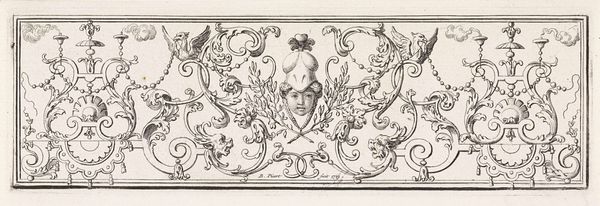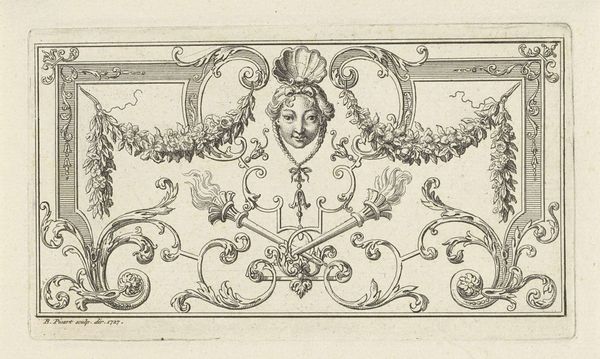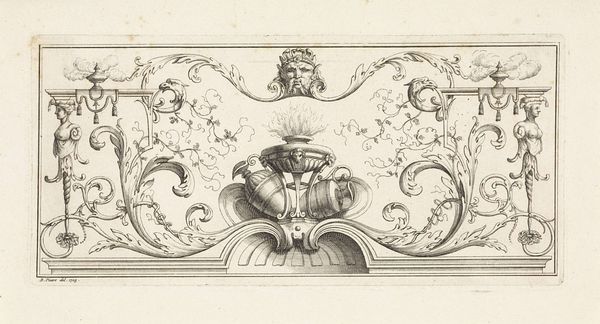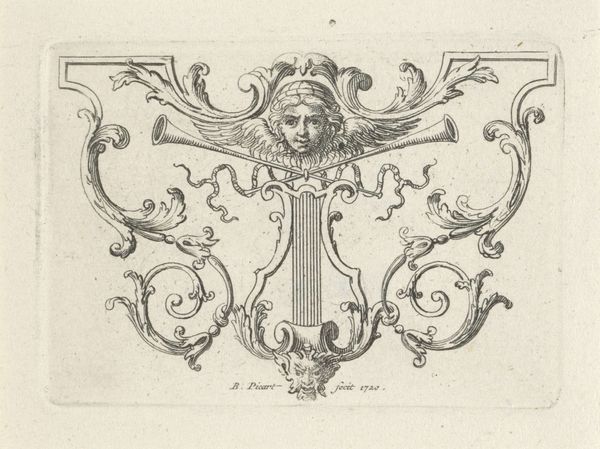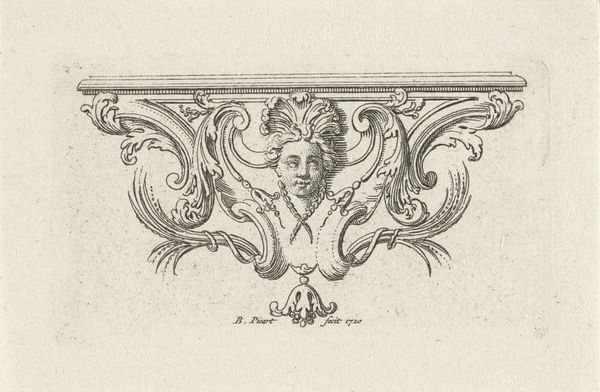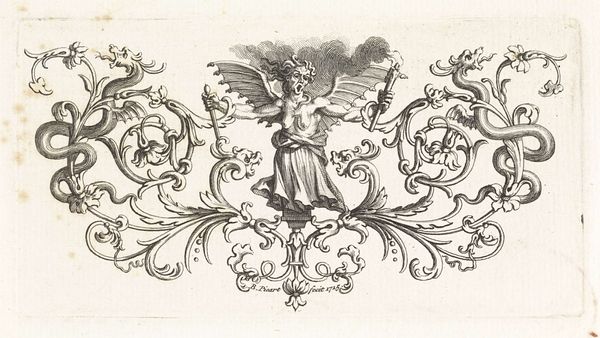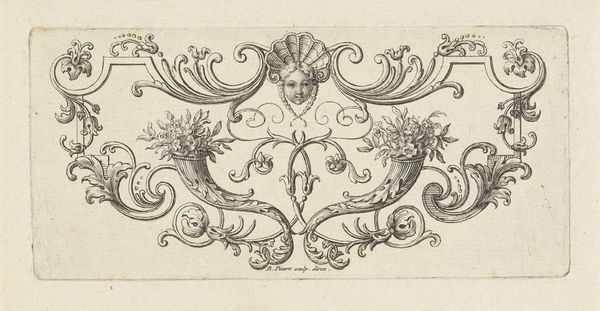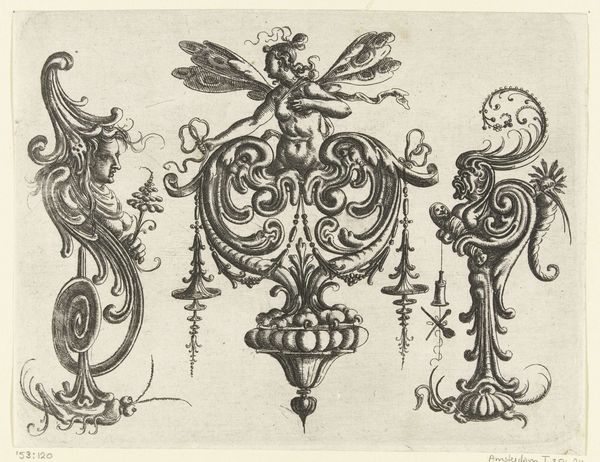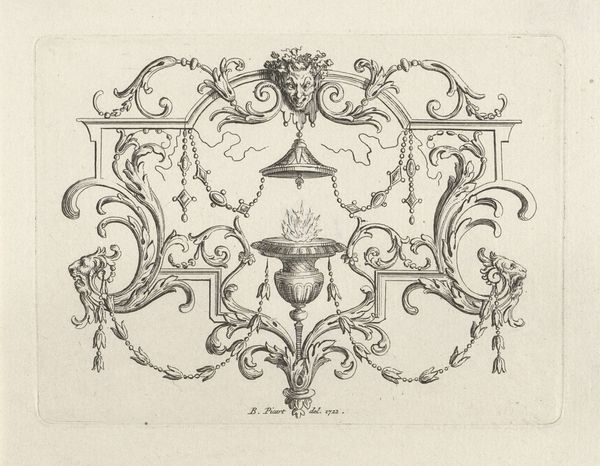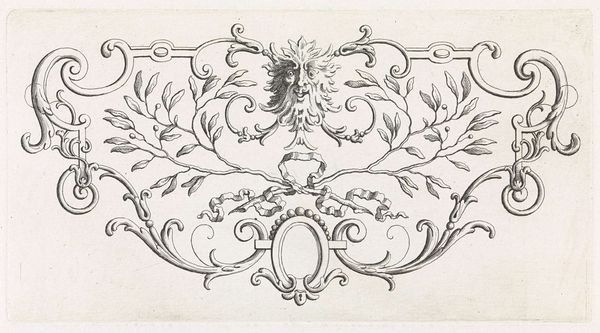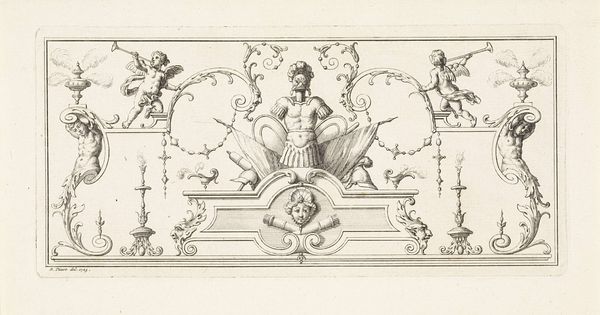
drawing, ornament, print, ink, engraving
#
drawing
#
ornament
#
baroque
# print
#
pen sketch
#
figuration
#
ink line art
#
ink
#
line
#
engraving
Dimensions: height 60 mm, width 182 mm
Copyright: Rijks Museum: Open Domain
Curator: Immediately, I am drawn to the intricate, almost lace-like quality of this engraving. It’s remarkably ornate, the linear details are exquisitely rendered. Editor: That’s a great observation. This is “Ornament met een Mercuriusgezicht,” or "Ornament with a Mercury Face" by Bernard Picart, dating to 1723. It's a fascinating example of Baroque ornament. What initially strikes me is how this seemingly decorative piece speaks to larger socio-political systems through its symbolic figure of Mercury. Curator: Tell me more about that. What makes Mercury so important here? Editor: Well, Mercury, or Hermes, embodies commerce, communication, and negotiation—essential pillars for the development of economic and colonial power structures in the 18th century. His winged hat and caduceus represent the rapidly expanding trade networks, enabled, of course, by exploitative labor practices. So this ornament, in essence, embodies a complex intersection of mythological symbolism and real-world political implications. Curator: It is fascinating to consider how these types of ornaments found their way into everyday life through print culture, acting as prototypes for various functional objects or even architectural details. Considering Picart’s role as a disseminator of ideas, do you think the adoption of ornament drove consumption and trade in this period? Editor: Absolutely. The wide circulation of prints allowed for the standardization of taste and design, driving a desire for similar aesthetics in furniture, clothing, and architecture among different social strata. These ornamental designs helped establish a visual language around consumerism, influencing production to generate revenue while simultaneously promoting specific ideological values related to power. Curator: Looking closely, the combination of engraving and ink allows for such delicate yet distinct lines and textures. These techniques clearly served both aesthetic and economic functions for their creators in disseminating a popular language of Baroque design that promoted a globalized world. Editor: And that’s precisely why examining a piece like this offers so much to unpack— from the nuances of production to the sweeping, exploitative effects of global commerce during the rise of empires.
Comments
No comments
Be the first to comment and join the conversation on the ultimate creative platform.
